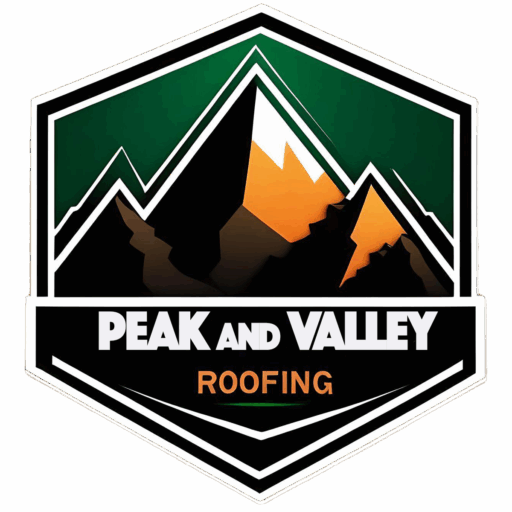If you’ve seen ads for Roof Maxx, you’ve likely wondered, does Roof Maxx really work? The idea sounds promising: a quick, plant-based oil spray that “rejuvenates” old asphalt shingles and restores flexibility. But after inspecting hundreds of treated roofs across Northeast Ohio, our team at Peak and Valley Roofing has seen firsthand what happens after a few freeze-thaw cycles: the results don’t last.
How Roof Maxx Works (and What It Actually Does)
Roof Maxx is marketed as a soy-based treatment that replenishes the oils your shingles lose over time. The oil soaks into the asphalt, supposedly restoring flexibility and moisture resistance.
In theory, that should help shingles last longer. In reality, here’s what Roof Maxx doesn’t do:
- ❌ Fix leaks or damaged shingles
- ❌ Repair flashing or underlayment
- ❌ Reverse cracking or curling
- ❌ Address poor ventilation or structural issues
It’s a cosmetic coating—like putting lotion on sun-damaged skin. It may look better temporarily, but the underlying damage remains.
Why Roof Maxx Usually Fails in Ohio’s Climate
Ohio weather is brutal on asphalt shingles. Repeated freeze-thaw cycles, high winds, and summer UV exposure quickly undo what Roof Maxx claims to restore.
We’ve revisited homes one or two winters after a Roof Maxx application and found the same shingles curling, cracking, and shedding granules, sometimes worse than before.
Real-World Example
Just last year, a homeowner paid nearly $4,000 for a Roof Maxx rejuvenation treatment. A year later, their home inspection failed due to a worn-out roof, and they still needed a full replacement. That $4,000? Gone. Wasted.
When you add it up, Roof Maxx often costs homeowners more in the long run than simply hiring a professional roofing company to repair or replace the roof properly the first time.
When Roof Maxx Might Make Sense (Barely)
To be fair, there are a few rare cases where Roof Maxx could make short-term sense:
- Your roof is less than 10 years old
- You plan to sell the house soon
- Your shingles are still in near-perfect condition
- You’re not eligible for an insurance-covered replacement
Outside those circumstances, you’re just paying for a temporary cosmetic touch-up.
A Smarter, Longer-Lasting Option
At Peak and Valley Roofing, we don’t rely on miracle sprays. We diagnose the real problem—whether that’s worn shingles, bad flashing, or storm damage—and fix it properly.
Our services include:
- Professional roof repairs and full replacements
- Storm and hail damage restoration (often insurance-covered)
- Preventive maintenance to extend your roof’s true lifespan
We’ve weathered every Ohio storm, and we build roofs that can too.
About Peak and Valley Roofing
Based in Northeast Ohio, Peak and Valley Roofing is a family-owned company committed to delivering exceptional workmanship and exceptional customer care.
Specializing in roof replacements, storm restoration, and siding services, the company also prioritizes giving back through community projects, such as Leonard’s.
📞 For more information, visit www.peakandvalleyroofing.com or call 216-777-9876.
Roof Maxx FAQ: What Homeowners Should Know
Roof Maxx is a soy-based spray treatment that claims to extend the life of asphalt shingles by replenishing their oils. The idea is that by “rejuvenating” the shingles, they’ll stay flexible longer.
The problem: it doesn’t address the real causes of roof failure—like wind damage, nail pops, or poor ventilation. Once those issues start, spraying oil won’t fix them.
Most Roof Maxx applications run between $2,500 and $4,000, depending on roof size. That’s roughly 30–40% of the cost of a full replacement, yet it provides no warranty coverage against leaks or future damage. In the end, you’re paying thousands for a short-term Band-Aid.
Maybe—but only in ideal conditions. In most Ohio homes, weather damage, poor ventilation, or existing wear offset any minor benefit.
In ideal climates, mild weather, newer roofs, and no damage, Roof Maxx might provide a short-term cosmetic benefit.
But here in Ohio, it’s a different story. Our snow, ice, and wind quickly undo what the spray temporarily covers up. As local roofing professionals, we’ve been called in repeatedly after failed Roof Maxx applications to replace roofs that should have been replaced from the start.
No. It only affects the surface oils in shingles. It can’t repair leaks, flashing, or the underlying roof structure.
In most cases, no. It’s a temporary cosmetic solution that can delay proper repairs and increase long-term costs.

